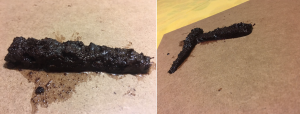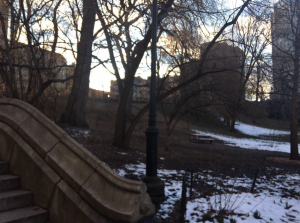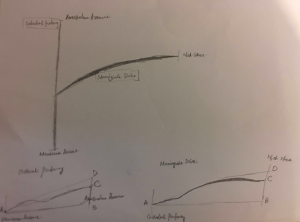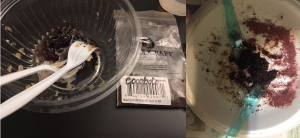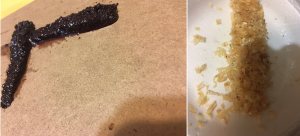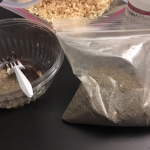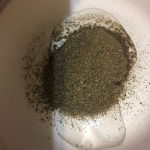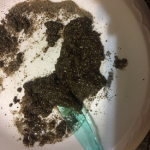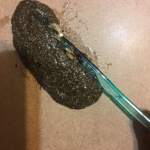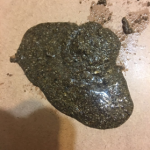by: Yuxing (Yolanda) Zhang
Recipe: 予奉使按边,始为木图,写其山川道路。其初遍履山川,旋以面糊、木屑写其形势于木案上。未几寒冻,木屑不可为,又熔蜡为之。皆欲其轻,易赍故也。至官所,则以木刻上之。上召辅臣同观。乃诏边州皆为木图,藏于内府。(Cited from Brush Talks from Dream Book, Shen Kua)
I was particularly inspired by Shen Kua’s Brush Talks from Dream Book during the process of primary-source research. One article included in the section dedicated to technologies and humanities (Section II) describes an object (木质地图/木方丈图) mapping a terrestrial space—a map on wooden plates made by Xie Zhuang (谢庄), who was a minister during the southern dynasties (AD 730-805). This mapping reconfiguration developed by Xie demonstrates resemblance to the contemporary three-dimensional mapping devices. The final product has a unique shape and consisted of several wooden plates. I intend to create a “Wooden Fangzhang Map” demonstrating the buildings and terrestrial space of the Columbia Morningside campus, following the procedures illustrated by Shen Kua.
This reconstruction project particularly interests me because I have been fascinated with the cartographical process and the cultural signification/values of ancient maps. Chinese cartography dates back to the Western Jin Dynasty (265-316). Pei Xiu, a minister and cartographic expert, developed cartography and suggested six principles during this principle. He oversaw the completion of the “Yu Gong Regional Maps,” along with eighteen articles including the “Terrain Fangzhang Map” (AD 224-271). These achievements precipitated a number of subsequent cartographic initiatives including the “Wooden Fangzhang Map,” completed by Xie Zhuang. Given their high historical and cultural value, I intend to propel a preliminary discussion on the application, rarity, and the historical, artistic, and scientific value of this map after the process of reconstruction.
Material & Measurements:
Most of the materials involve in the reconstruction process are broadly and vaguely listed according to the recipe. Sawdust and flour paste are applied to the wooden grounding board to articulate the general shape of this terrestrial map before final engraving on a gigantic wooden block. Based on Shen Kua’s depiction, cartographers replaced sawdust and flour paste with wax during extremely chilling weather. The final product is engraved on a wood piece based on this primary model; the “Wooden Fangzhang Map” was historically an administrative mapping illustration for royal collection.
However, Shen Kua’s article does not clearly indicate what kind of wood block should be used and its approximate size. I am thinking of consulting Casa Wang regarding wood selection since he is an expert on the manufacturing of wooden products. Also, since I do not have any skill in wood engraving, I wonder if it would be more efficient to complete a final product just by using sawdust, flour paste, and wax on a wooden grounding piece because those materials are comparably easier to modify when mistake happens.
Tools & Equipment: Even though the mandatory tools are not indicated in the recipe, glue and engraving knifes/kit are necessary. However, the contemporary engraving tools are probably different from the ones that Shen Kua’s contemporaries used (more research need to be conducted here); therefore, the techniques and process may be different. I would consult Casa Wang regarding this issue and ask for his suggesting of how to best replicate these inaccessible tools.
I think this recipe calls for purpose-designed equipment (specialized glue and engraving knits), and the raw materials are not specified to a particular kind (like what kind of sawdust and wax).
What kinds of larger social, historical, methodological questions do you ask from this process?
I classify the questions arise in the process of reconstructing Xie Zhuang’s “Wood Fangzhang Map” into three categories:
- The studies of the graphic language (two-dimensional & three-dimensional) as symbolic mediation and as technical illustrations
- The technical construction process, including the study of mapmaking as a specialized knowledge, the division of labor (and the implicit protocol involved in the creation process), and the (medium) specificities attributed to three-dimensional wood maps, etc.
- The role of “Wood Fangzhang Map” and Xie’s contribution in a larger realm of scientific and technological history; I am also interested in examining how wrinters like Shen Kuo decided upon what to include and what to exclude from the compilation on science and technology (the relationship between technology and the literary writings on technology)
I understand that I am not able to answer all of the questions from this historical reconstruction assignment, but these experiments really offered me a hand-on experience to bodily examine the process of transferring bodily knowledge to illustrative demonstrations. I distinguish maps from other forms of graphic representation and see maps as an encoding of knowledge intended for both scientific and political functions and served as a template for actions. What types of symbolic systems are characteristic of this particular field of technical knowledge? How did the set of technical language convey the philosophical preoccupations and practical goals of the specialists working in the field? How did they act cognitively as graphics or three-dimensional demonstrations, alone or in conjunction with other media?
How did your questions change over time?
At the beginning, my questions focused more on the textual symbolic meaning of maps as a specialized field of technical knowledge (encoding and decoding). After bodily examining the climbs and descends of the streets, I was aware that there were many layers of knowledges (tacit and explicit) involved in the reconstruction process; what particularly intrigued me was the tension regarding communicating the knowledge within my own body and mind vs. delivering the learnt knowledge aided by a set of symbolic languages, be it graphical or three-dimensional. This assignment helped me to understand mapmaking not only as a completed textual product, but ultimately as an event; it is essentially an interface between the cartographer’s knowledge system with the nature, mediated with layers of political and cultural histories. Studying a three-dimensional map not only require one to see the product as three-dimensional, but engaging with it and its histories three-dimensionally (textual, technical, and the larger social environment), as maps are not just words so merely focusing on textual analysis would not be sufficient.
How are you engaging with narratives in science and technology?
In the process, I constantly question about how graphical models (both paper illustrations and three-dimensional demonstrations) and text convey technical knowledge. Rather than being obscured by a Euro-centric view that tends to criticize Chinese technical illustrations as lack of scientific accuracy, I engage with the study of Xie Zhuang’s map with a particular focus on its intended purpose (both scientific and political), its construction process, and the sociopolitical meanings it served situating in a larger spectrum of Chinese technological history. Concepts such as tacit knowledge vs. explicit knowledge, authorized science vs. mass science, and the practices of (national) classification helped me to frame my questions. However, even though the concepts we learnt in readings are largely founded upon dichotomous comparisons, I see mapmaking as an example standing at the intersection of those dichotomous assertions (studying the set of protocols developed among cartographers and the negotiations between imperial and popular usage of maps could be further directions of scholarly research). Sometimes my thinking goes beyond the technical act of mapping itself: I also want to explore the human awareness of space, whether such a space is the peripheries of an empire or a medival megalopolis and cultural paradigm. This assignment asks about how space was made tangible through both illustration and text, how cartographers and writers evaluated and employed spatial knowledge, and what they conceptualized to be the sources of its efficacy.

